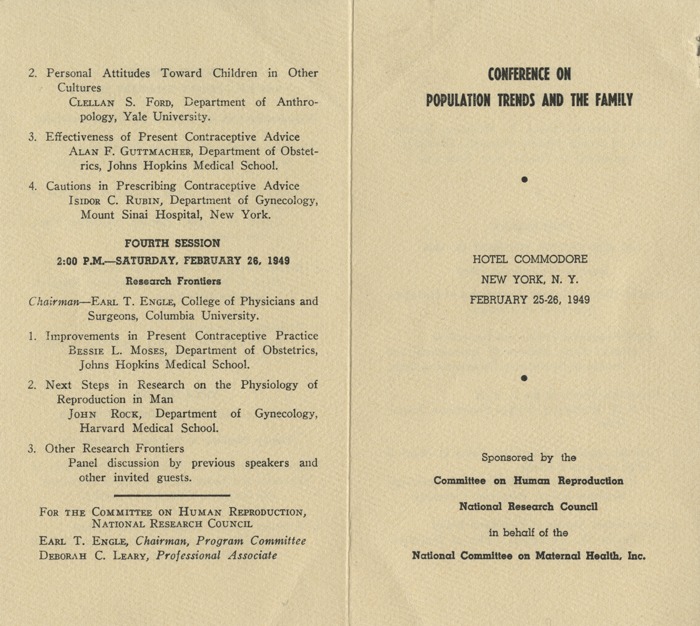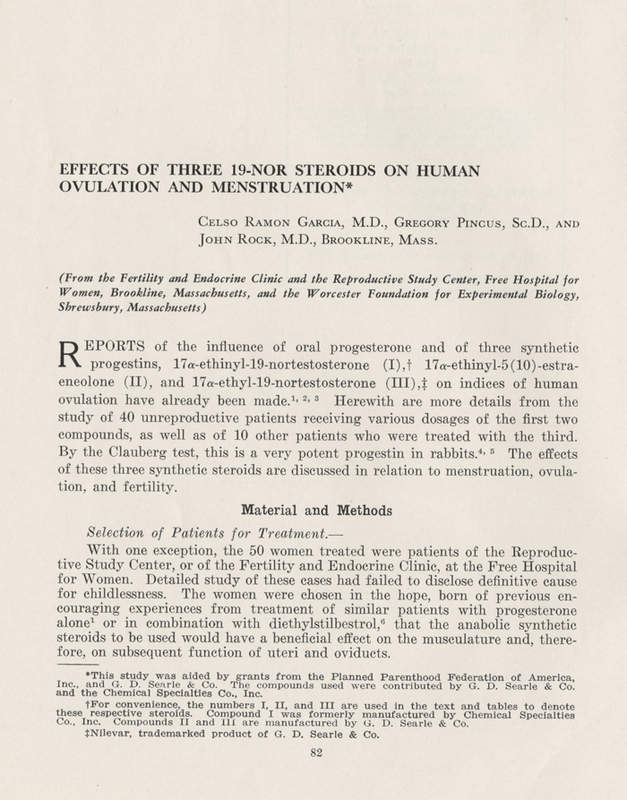Beginnings of The Pill
After World War II, Dickinson’s National Committee on Maternal Health and Planned Parenthood (the successor to Margaret Sanger’s American Birth Control League) asked the National Research Council to oversee a program of research in reproductive science and medicine. Rock was a founding member of the resulting Committee on Human Reproduction and wrote its research agenda. In 1948, the committee planned to support 10 research projects, including projects headed by Gregory Pincus, Rock, and Clarence J. Gamble. Rock would later head the first trial of progesterone and estrogen on a small group of women at the Free Hospital of women.
Rock promoted the Committee on Human Reproduction research agenda in 1949. During discussion of his paper, "Next Steps in Research on the Physiology of Reproduction in Man," he describes a possible approach to hormonal contraception.
This is one of the first articles to publish results from the early study at the Free Hospital for Women involving 50 female participants being treated for infertility with a hormonal regimen. Rock found that using a combination of estrogen and progesterone would fool the body into thinking it was pregnant. The women, thus “rested,” would be taken off hormones; a surprising number of these patients subsequently conceived children in what was termed the “Rock Rebound.” The effects upon ovulation, i.e. preventing the ovum from being released, indicated its potential to act as a contraceptive.



